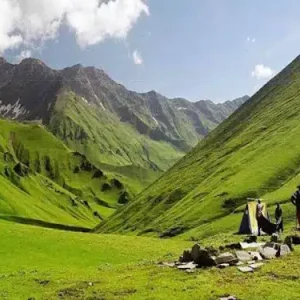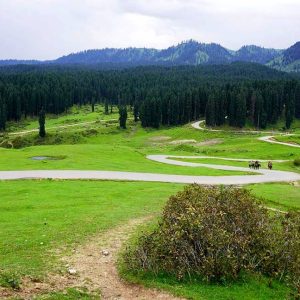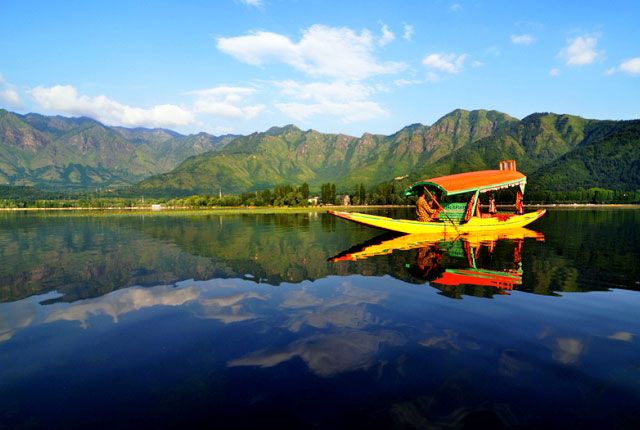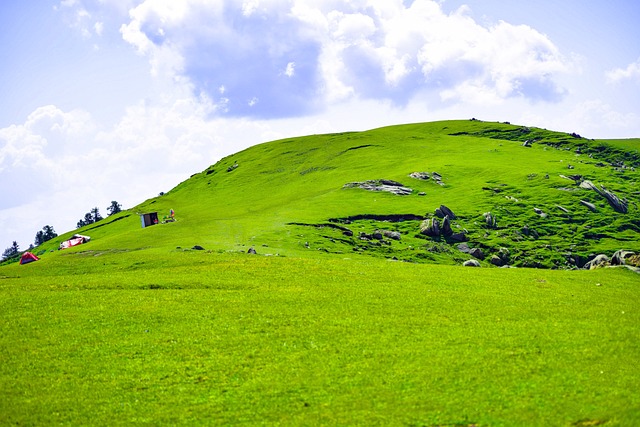
Is it safe to visit Doodhpathri now
Table of Contents
ToggleOverview
Situated in the Budgam district of Jammu & Kashmir, Doodhpathri—literally “Valley of Milk”—is among India’s most magical yet underrated travel spots. As tourists pursue new experiences off the tourist map, queries regarding Doodhpathri safety and whether or not it is truly safe to visit are numerous. In this comprehensive Doodhpathri travel guide, we’ll address every aspect of safety—from political stability to health care, from seasonal considerations to local support.
By the time you finish this blog, you’ll have everything you need—from an in-depth day-by-day itinerary and packing list to cultural advice and emergency numbers—to plan a stress-free, unforgettable journey. And don’t worry: Doodhpathri is safe for solo travelers, families, honeymoon couples, and adventure enthusiasts alike.





Why Doodhpathri Is a Safe Destination in 2025
Political Stability and Tourism-Friendly Policies
Jammu & Kashmir has seen tremendous administrative and infrastructural development in recent years. In contrast to hotspots of trouble in far-flung border regions, Doodhpathri is situated firmly in the heartland of Budgam district, where public order is secure and tourism is actively promoted by state and local governments. By the increased tourist safety measures in Doodhpathri, the checkpoints are guarded by friendly tourism police, roads are constantly patrolled, and medical squads stand ready during peak season. The Government of Jammu & Kashmir’s initiative for responsible tourism makes sure that any minor problem is immediately taken care of, thus ensuring safe travel in Doodhpathri a priority of the government.
Warmth and Vigilance of the Local Community
Maybe the biggest advantage to the security of Doodhpathri is the Kashmiri locals themselves. Villagers in villages such as Aragah and Zirmulla welcome guests like honored friends, with homestays, guides, and even spontaneous cupfuls of kahwa (traditional green tea). Their authentic friendliness becomes instant security: strangers are watched over by neighbors and not likely to be harassed. Travelers say that locals proactively provide tips on safe paths, weather forecasts, and secret scenic areas, significantly improving comfort and confidence.
Geography and Climate: Seasonal Safety Insights
Spring & Summer (May – September)
Accessibility: May 1 to September 30, snow has completely melted and the Srinagar to Doodhpathri path (about 42 km) is open. Roads are asphalted, susceptible only to periodic landslides following heavy monsoonal rains in July–August.
Weather: Daytime temperatures are 15–25 °C, with chilly nights of 8–12 °C. Trekkers have a safe and pleasant time trekking, horse riding, and camping in this temperate weather.
Safety Tips: Bring a light raincoat for unexpected showers; wear sturdy trekking shoes to walk through dewy pastures.
Autumn (October)
Accessibility: Peaceful weather and less crowd favor October as an ideal tranquil visit. Obtain local advice on early snowfall at high altitudes.
Safety Tips: Bring layers—daytime temperatures can plummet rapidly after dark.
Winter (December – February)
Accessibility: Deep snow covers the area; access calls for four-wheel drive vehicles and perhaps snow chains. Locals recommend group travel with seasoned drivers.
Safety Notice: Although the snowy scenery is breathtaking, winter safety in Doodhpathri requires care. Roads can temporarily close, and there are few medical centers in the valley. Solo travel during deep winter is not advised unless with a well-established tour operator.
Getting There: Safe Routes and Permits
By Air
Nearest Airport: Srinagar International Airport (SXR), ~65 km from Doodhpathri.
Safety Note: The airport has increased security checks. Taxis and ride-sharing services run on government permits.
By Road
Route: Srinagar → Budgam → Khansahib → Aragah → Doodhpathri. Good highways until Khansahib; thereafter, picturesque but narrower mountain roads.
Travel Time: 1.5–2 hours by private car or shared taxi.
Safety Tips: Begin early (prior to 9 AM) to stay away from driving in fog or constricting light; have a phone power bank in the event of signal loss.
Permits & Documentation
Indian Nationals: No particular permits needed. Bring valid photo ID.
Foreign Nationals: Register at the Srinagar Tourist Reception Centre; bring passport and visa copies. Registration is also possible online through the Jammu & Kashmir tourism portal.
Accommodation: Safe and Comfortable Stays
While Doodhpathri’s beauty resides in its untouched landscapes and not luxury resorts, you have various safe accommodation choices within a 20–30 km radius:
Eco-friendly Homestays
Managed by local families in Aragah and Zirmulla.
Basic Wi-Fi, Kashmiri home cooking, genuine warmth, emergency contact with host.
Guesthouses in Khansahib
Mid-range comforts: En-suite toilets, backup generator, 24×7 water.
Safety: CCTV, on-call drivers for local transport, emergency medical kit available on site.
Campsites in the Meadows
Tented camping organized by registered tour operators.
Safety: Quality gear, guided campsites, portable toilets, firewood stoves.
Srinagar Base
Live in a hotel or houseboat on Dal Lake for five-star facilities.
Organize day trips to Doodhpathri for maximum connectivity and backup infrastructure.
Health, Hygiene, and Medical Facilities
On-site Medical Support
First-aid centers: Arranged near popular meadows.
Nearest hospital: Sub-District Hospital Khansahib (~25 km).
Ambulance services: Accessible through local homestays or tourism police.
Water and Food Safety
Water: Carry a UV-sterilizer pen or use boiled water arranged by homestays.
Food: Kashmiri cuisine—such as Rogan Josh, Dum Aloo, and local trout—made with fresh ingredients. Always stay in busy, highly-rated homestays or guesthouses to avoid risk of upset stomach.
Altitude & Physical Health
Elevation: ~2,730 meters above sea level.
Precautions: Mild effects of altitude (dizziness or headache) may occur. Acclimatize in Srinagar for one day, drink plenty of water, and climb slowly on foot when possible. Over-exertion on day one may cause tiredness; plan light activities in the beginning.
Things to Do: Safe Adventure and Leisure in Doodhpathri
- Trekking & Nature Walks
Beginners’ Trail: 4 km loop around the main meadows—flat, well-marked, and led by shepherds.
Pir Panjal Viewpoint: Intermediate trek (7 km round-trip) to a ridge overlooking the Pir Panjal range. Pack snacks and inform your guide of your return time.
- Horse Riding with Local Guides
Duration: 30-minute rides to full-day excursions.
Safety Measures: Helmets provided; rides limited to well-worn paths. Suited for children (above 8 years) and seniors.
- Camping Under the Stars
Sites: Open meadows near two perennial streams.
Rules: Camp only in authorized areas with permission; bring your own equipment or rent from licensed tour operators. Night temperatures drop to 4–6 °C even in summer—use warm sleeping bags.
- Birdwatching & Photography
Species: Himalayan bulbul, paradise flycatcher, and periodic pheasant sightings.
Equipment: Binoculars, telephoto lens. Early morning is ideal for clear light and active birds.
- Picnicking by the Streams
How: Buy a picnic basket from Khansahib markets—local breads, cheese, apples, and chai.
Safety Tip: Steer clear of fragile banks; sit on designated safe spots to avoid unintended slips into chilly water.
- Local Festivals & Cultural Immersion
Wangath Tulip Festival (May): Tulip gardens at Indira Nagar near here burst into riotous colors.
Local Fairs (Jashn-e-Bahar): Spring fairs with traditional music, dance, and crafts at Khansahib Bazaar. Engage in safe cultural interactions and shop responsibly.
Packing Checklist for Safe and Comfortable Travel
- Documents: ID proofs, permit printouts, travel insurance details.
- Clothing: Layered dressing—quick-drying t-shirts, fleece jacket, waterproof shell jacket, woollen cap, thermal leggings winter.
- Footwear: Reliable trekking boots, spare socks, comfortable slippers for homestay.
- Medical Kit: Essential first-aid, altitude sickness pills, oral rehydration salts, prescribed medicines.
- Gadgets: Power bank, universal adapter, camera (with extra battery), headlamp for camps.
- Miscellaneous: Water bottle (reusable), sunscreen, sunglasses, trekking poles, insect repellent.
Alone, Woman, and Family Travel: Safety Tips Customized
Alone Travelers
Tell someone back home your day-wise schedule.
Install offline maps (Google Maps offline regions) for times of no internet connectivity.
Have emergency numbers (homestay host, tourism police) saved on speed-dial.
Woman Travelers
Dress modestly in accordance with local culture—long sleeves and trousers.
Travel during group tours where feasible; refrain from solitary trails after dark.
Bring along a personal alarm or whistle.
Families with Children
Choose short walks and guided pony rides—under 12 children must be kept in sight throughout.
Take extra snacks and warm clothing; little ones dissipate heat quickly in cold grasslands.
Use life jackets if you have plans for picnics at the waters’ edge.
Responsible Tourism: Safeguarding Doodhpathri's Sanctity
- Leave No Trace: Take back all plastic; avoid disturbing wildlife and plant cover.
- Support Locals: Employ local guides from your homestay, purchase handicrafts through village cooperatives.
- Water Conservation: Conserve water; refrain from wasting ground spring water.
Sustainable travel not only sustains the environment but also establishes goodwill between the visitor and local community, building Doodhpathri as a secure, well-managed destination.
Frequently Asked Questions (FAQs)
Is it safe to travel to Doodhpathri alone?
Yes. With good local administration, friendly locals, and well-marked trails, solo travelers have zero security concerns. Always let someone know your plans.
Are there ATMs in or near Doodhpathri?
No. The closest ATMs are in Khansahib (30 km). Bring enough cash in small denominations.
What mobile networks have the best coverage in Doodhpathri?
Jio and Airtel have the best coverage. Be prepared for 2G/3G speeds; don’t expect streaming, but messaging and calls are fine.
Can I charge my phone in campsites?
There are some operators who offer solar charging points; portable power banks are advised.
Do I have to have trekking experience?
For simple meadows and horse riding, there is no experience needed. For intermediate treks, it is suitable for those with a medium level of fitness.
Conclusion: Doodhpathri Is Safe, Spectacular, and Waiting for You
From its rolling emerald meadows and gurgling streams to the unwavering warmth of its people, Doodhpathri proves that offbeat destinations can be both utterly safe and breathtaking. By planning thoughtfully—picking the right season, booking licensed guides, packing appropriately, and respecting local customs—you’ll unlock the valley’s magic without compromising security or comfort.
So pack your bags, load your camera, and get ready for an experience of a lifetime. Yes, it is absolutely safe to travel to Doodhpathri in 2025, and there is never a better time to discover this gem of Kashmir. Happy travels!
How to book Kashmir tour?
Contact a travel agency that specializes in Kashmir tours. You can reach out to the following for assistance:
- Phone:
- +91 7889 655596
- +91 7006 891267
- Email:
Inquire about tour packages, itineraries, and pricing, and confirm your booking for a memorable winter experience!
People Also Ask
Is Doodhpathri safe to visit in 2025?
Yes. Doodhpathri has stable security, visible tourism police patrols, and welcoming locals. Most travelers experience zero safety issues when following standard precautions.
What is the best time to visit Doodhpathri?
The optimal window is May through September—meadows are lush, roads are clear, and temperatures range 15–25 °C, making outdoor activities safe and enjoyable.
How far is Doodhpathri from Srinagar, and how do I get there?
It’s 42 km by road: take a taxi or self-drive via Budgam and Khansahib. The journey takes about 1.5–2 hours on well-maintained highways and mountain roads.
Do I need any permits to visit Doodhpathri?
Indian nationals: No special permits—carry a government-issued ID.
Foreign nationals: Register at the Srinagar Tourist Reception Centre or online before arrival; keep passport and visa copies handy.
Are there ATMs or banks in Doodhpathri?
No. The nearest ATMs are in Khansahib (~25 km). Always carry sufficient cash in small denominations for local expenses.
Which mobile network works best in Doodhpathri?
Airtel and Jio provide the most consistent 2G/3G coverage. Data speeds can be slow; prioritize voice calls and messaging over streaming.
Is it safe for solo female travelers to visit Doodhpathri?
Absolutely. The region’s strong community vigilance, guided tours, and tourism police presence make Doodhpathri safe for solo female travelers—just exercise routine caution.
What accommodation options are available near Doodhpathri?
- Eco-friendly homestays in Zirmulla or Aragah
- Guesthouses in Khansahib with modern amenities
- Srinagar hotels/houseboats for day trips
Can I camp overnight in Doodhpathri?
Yes—registered tour operators offer safe camping with quality tents, sleeping bags, and guided setups. Always camp in designated areas.
What altitude is Doodhpathri, and do I need to worry about altitude sickness?
At 2,730 m, mild symptoms like headache or dizziness can occur. Acclimatize in Srinagar, stay hydrated, and ascend gradually.
What outdoor activities can I do in Doodhpathri?
- Beginner-friendly trekking loops around the meadows
- Horse riding on marked trails
- Picnicking by crystal-clear streams
- Birdwatching (Himalayan bulbul, pheasants)
- Stargazing under minimal light pollution
How should I dress for a trip to Doodhpathri?
Layered clothing: moisture-wicking base layers, fleece or wool mid-layers, waterproof outer shell, thermal leggings (winter), and sturdy hiking boots.
What should I pack for Doodhpathri?
Essentials include ID, cash, power bank, first-aid kit, altitude sickness medication, sunglasses, sunscreen, reusable water bottle, and a camera.
Is it possible to do a day trip to Doodhpathri from Srinagar?
Yes—you can leave early morning, enjoy trekking or horse riding, and return to Srinagar by evening, provided you start before 9 AM and avoid night driving.
Are local guides necessary in Doodhpathri?
While optional for the easiest trails, hiring a local guide enhances safety, provides cultural insights, and helps discover hidden viewpoints.
Can children safely visit Doodhpathri?
Certainly—short treks and guided pony rides are family-friendly. Always keep kids within sight and pack extra warm layers and snacks.
What health and hygiene measures should I take?
Drink boiled or UV-sterilized water, eat at busy homestays and guesthouses, carry sanitizer, and avoid raw street food to prevent stomach issues.
Are there medical facilities near Doodhpathri?
A first-aid post exists near the main meadows; the nearest full-service hospital is in Khansahib (~25 km). Ambulances can be arranged through homestays.
Can I combine a trip to Doodhpathri with other Kashmir destinations?
Absolutely. Popular add-ons include Gulmarg, Pahalgam, Yousmarg, and the Wangath Tulip Gardens—ideal for an extended Kashmir travel itinerary.
What cultural experiences are available near Doodhpathri?
Attend local spring fairs like Jashn-e-Bahar in Khansahib Bazaar, sample traditional Kashmiri kahwa, and shop for local handicrafts from village cooperatives.
How eco-friendly is tourism in Doodhpathri?
The region emphasizes sustainable travel: strict no-litter policies, homestays sourcing local produce, and guided treks that minimize environmental impact.
Is winter travel to Doodhpathri advisable?
Winter (December–February) offers stunning snowscapes but requires 4×4 vehicles, snow chains, and experienced drivers. Daylight hours are short; only seasoned travelers should attempt.
What wildlife might I see in Doodhpathri?
Common sightings include Himalayan bulbul, magpies, and occasional Himalayan marmots. Large wildlife is rare in the meadows, making it a safe environment for visitors.
Do I need travel insurance for Doodhpathri?
Strongly recommended. Ensure coverage includes emergency evacuation, medical treatment, and trip cancellations due to weather or road closures.
How do I stay updated on weather and road conditions?
Check with your homestay host or local tour operator each morning. Follow Jammu & Kashmir tourism social media channels and sign up for SMS alerts on monsoon or snowfall advisories.




